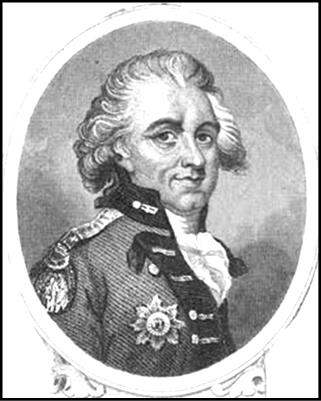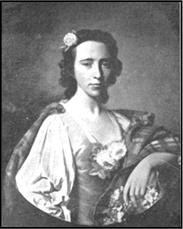appeared in Moore’s Creek. The Highlanders on the west side of the creek returned fire briefly, while many of the other Loyalists fled. The Patriots, meanwhile, surged out from behind their earthworks in pursuit first replacing the planks of the bridge. One small detachment of Patriots forded the cold waters of Moore’s Creek and managed to cut off some escaping Tories. Despite the effort of some of their officers, the Tory army was soon in full route with some of the men stripping or cutting the horses free from their harness and wagons, swinging up on their backs and galloping away. Sometimes there were as many as three men on the back of the horses. The shattered Tory army quickly raced back to their previous night’s camp six miles away. There it was decided to disband, but not before they attempted to retreat to Smith’s Ferry about 25 miles from Cross Creek.
Moore with his Continentals arrived a few hours after the battle and he quickly organized pursuit of the Tories. MacDonald who was too weak to accompany his men was captured. The rest of his Loyalist army was soon in Patriots hands having not gone far. In all about 850 Loyalists were captured within a couple of days of the battle, which also included a number of Highland immigrants and suspected Tories not in the Loyalist army. Also captured were 1,500 rifles and 350 muskets taken not only from the Tory army, but also among the Loyalists of the backcountry. The Loyalists had suffered between 30 to 70 killed, wounded and missing. Most of the Tory soldiers captured were paroled and released, while the officers were sent to jails in Halifax and then onto Philadelphia. Many of them, including Donald MacDonald, were later exchanged for Patriots officers. The North Carolina Patriots, on the other hand, had only one man killed and one wounded in the battle.
accompany his men was captured. The rest of his Loyalist army was soon in Patriots hands having not gone far. In all about 850 Loyalists were captured within a couple of days of the battle, which also included a number of Highland immigrants and suspected Tories not in the Loyalist army. Also captured were 1,500 rifles and 350 muskets taken not only from the Tory army, but also among the Loyalists of the backcountry. The Loyalists had suffered between 30 to 70 killed, wounded and missing. Most of the Tory soldiers captured were paroled and released, while the officers were sent to jails in Halifax and then onto Philadelphia. Many of them, including Donald MacDonald, were later exchanged for Patriots officers. The North Carolina Patriots, on the other hand, had only one man killed and one wounded in the battle.
More than two weeks after the gun smoke cleared at the battle of Moore’s Creek Bridge, Clinton finally arrived near Wilmington with five ships and two companies of redcoats on 12 March. That day he met with Martin who failed to convince Clinton that the defeat at Moore’s Creek Bridge was only a set back and to send regulars into North Carolina’s interior. For weeks Clinton waited for the bulk of his force sailing from Ireland which had not set out until mid-February. Not long after they finally arrived Clinton sailed for Charleston, South Carolina where he would fail in capturing the town. Despite Josiah Martin’s plan, North Carolina would not be returning to Royal rule and he would not be returning to his role as governor.
[1] Quoted in David K. Wilson, The Southern Strategy: Britain’s Conquest of South Carolina and George, 1775-1780, (Columbia, South Carolina: The University of South Carolina Press, 2005) p. 1.
[2] MacDonald’s age is given in different accounts between 50 and 80. J.F.D Smyth states on page 232 in his A Tour of the United States of America Vol. 1 (London: Printed for G. Robinson, 1784) that he was “a man then nearly seventy years of age.”
[3] Quoted in North Callahan, Royal Raiders: The Tories of the American Revolution, (New York: The Boobs-Merrill Company, Inc, 1963), p. 18.
[4] Many accounts give MacDonald’s force as being between 1,400 to 1,600 men. This may have been their numbers at the beginning of the campaign but by the time of the battle desertion had greatly reduced their numbers. See Wilson, The Southern Strategy p.30.
[5] Quoted in Wilson, 28.
Bibliography
Boatner III, Mark M. Encyclopedia of the American Revolution. New York: David McKay Company, Inc., 1969.
Callahan, North. Royal Raiders: The Tories of the American Revolution. New York: The Boobs Merrill Company, Inc, 1963.
Fryer, Mary Beacock. Allan Maclean Jacobite General: The Life on Eighteenth Century Career Soldier. Toronto: Dundurn Press, 1987.
MacLean, J.P. Flora MacDonald in America. Lumberton, N.C.: A.W. McLean, 1909.
Phillips, Kevin. 1775: A Good Year for Revolution. New York: Penguin Group, 2012.
Rankin, Hugh. “The Moore’s Creek Bridge Campaign, 1776,” The North Carolina Historical Review Vol. 30, No. 1 (January 1953).
Wilson, David K. The Southern Strategy: Britain’s Conquest of South Carolina and George, 1775 -1780. Columbia, South Carolina: The University of South Carolina Press, 2005
Per both Muzzle Blasts and Mr. Phifer who wrote “King George and the Broadswords” we approve of you to re-print his article. The only thing that we ask is that you put that this was originally printed in Muzzle Blasts May 2019.
Amber May
National Muzzle Loading Rifle Association
Muzzle Blasts Coordinator
